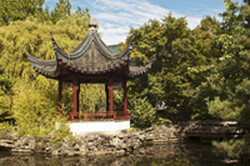New meaning in the Views of Jehol
Matteo Ripa, an Italian missionary to China during the 18th century, introduced engravings depicting Chinese scenes to the English art establishment. The landscape-style garden scenes, known as the Views of Jehol, were believed to have founded new European styles of both gardening and art. The EU-funded project MATRIVOJ offered a new interpretation. Adapting a recent idea that landscapes reflect cultural conventions, the project aimed to expose the clashes and negotiations that shaped the style of the works. Moreover, the concept of 'entangled histories' was applied to cultural transfer, showing the relationship between the Views, subsequent western styles and predecessor Chinese woodcuts. The collected works reflect a larger Sino-European engagement of the time. The project ran for two years to August 2013. The conclusions cover three main areas. Firstly, the Chinese woodcuts called Yuzhi Bishu Shanzhuang sanshiliu jing shi (The Emperor's Poems on the thirty-six views at Bishu shanzhuang) embody and promote Confucian beliefs and practices. Ripa's works show parallels from a Christian standpoint, and thus both represent the conflict between Christian and Confucian rituals and attempt to assert church authority. Secondly, MATRIVOJ argued that Chinese landscapes fuelled the 18th century British elite's idea of creating a Neoplatonic utopia. Chinese styles influenced the process of building the modern British state and society, including that of restraining passions. Lastly, the project concluded that 'entangled landscapes' offer a paradigm for research innovation. Landscapes are not mere artistic exchanges — instead, they conduct the process of interaction and hybridisation between China and Europe. The MATRIVOJ project developed knowledge of European history and cultural exchange with China. Such understanding is again relevant, and facilitates modern European reciprocal relations with China.




